UDM: Teaching Design Through Social Justice and Sustainable Communities
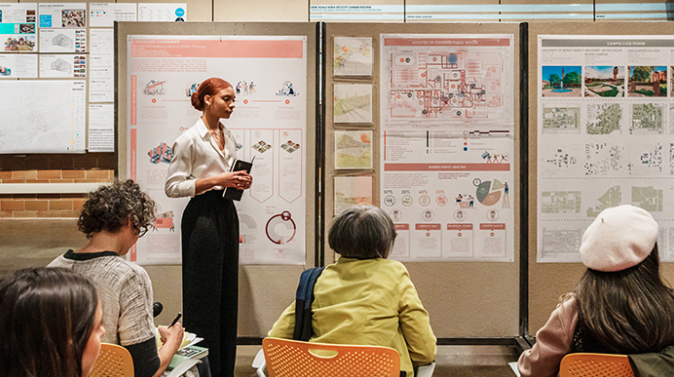
For nearly sixty years, the University of Detroit Mercy School of Architecture and Community Development has been educating designers and planners. The school is committed to preparing students to address urban revitalization, environmental justice, and sustainability, and through its design studios, Master of Community Development, Detroit Collaborative Design Center, and international studies program, offers real-world experience. Dean Dan Pitera talked to SBN Detroit about the school’s approach to preparing students for the practical applications of sustainable design. Q: What can you tell us about the community development aspect of the school? A: If we take a child who is enrolled in a poorly designed and unmaintained school and then put that same child with the same faculty in the same neighborhood in a well-designed school, the child will be nurtured and developed differently. The space around a child – a person – is important. The spaces we are in influence how we are as people just like nutrition influences health and wellbeing. So why aren’t our communities designed differently? And from a school perspective – how do we teach that? We ingrain community development through the lens of social justice throughout our curriculum, and we start on day one of the program. For example, within a Structures course we embed these concepts, so students begin to see that whether they are designing a museum or affordable housing, all designs should be looked at through this lens. Q: The school is internationally recognized for its environmental justice-driven and student-centered approach. Talk about this approach and how it’s different. A: We help students understand that climate change and climate justice are linked. We sit in the Great Lakes region with Michigan at the center. Our buildings and our communities must be prepared and designed for climate migration, so our students must obtain hands-on experience. Q: You led the Detroit Collaborative Design Center for years. Is this center unique when it comes to design schools? A: Only a handful of architecture schools have something like this. I modeled it after the medical field, where teaching hospitals align with and collaborate with medical schools. The DCDC is a true architecture office within the school of architecture. It works exclusively with nonprofit organizations and government agencies. There, students get paid to work, and they work with professional architects, urban designers, and landscape architects. It is essential to take theory and practice and bring them together. Q: How do you prepare future generations of architects and planners to think sustainably throughout their careers? A: We’ve been teaching this way for a long time. Now, the students coming in want education around sustainability and that’s exciting for us. I think the most effective way to teach is not class by class, but through concepts that are continually woven throughout the curriculum. The concepts of social justice, climate change, and building sustainable communities are woven throughout every class and we start on day one, as I mentioned previously. I teach Introduction to Architecture to first-year students, and I introduce the United Nations development goals. I teach that architects essentially create 40% of greenhouse gases produced annually. The emissions come not just from the buildings themselves, but the materials used to build, and the processes taken to create these materials. Students come in thinking in terms of brick-and-mortar buildings, and we teach them immediately about the impacts on the environment and the communities around the buildings. We have a Zoning and Codes class in which students learn about redlining, deed restrictions, and blockbusting. Most professors at other schools are not teaching this. So, the students are learning and digesting these things constantly throughout their five years. Q: What do you think your graduates take out into the workforce that’s different? A: The ability to adapt to change. The program they are working with now to design lighting or a certain type of heat will likely not be the same program in four years. Things change fast. I asked my students in the fall of 2022 if they thought we’d be using AI going forward. They laughed. At the start of 2023, I asked them what tools we as architects would be using, and they all said AI. So, we work with the tools we have today but also train the students to be flexible and adaptable. They will need these skills to design and also to sustain their careers and lives. Be sure to subscribe to our newsletter for regular updates on sustainable business practices in and around Detroit.
The Impacts of the Gordie Howe International Bridge on a Community
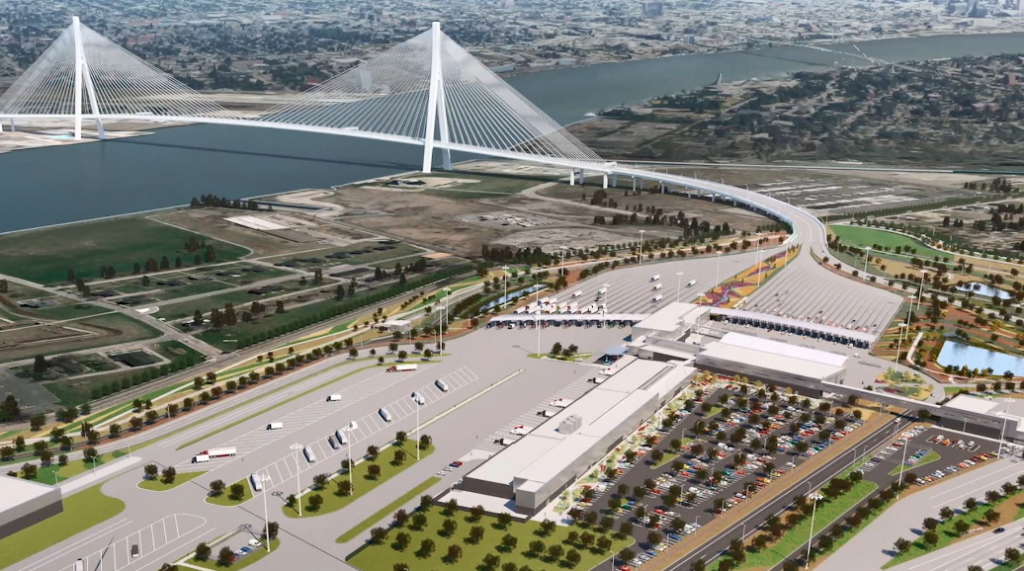
The Gordie Howe International Bridge – currently under construction – is a 167-acre suspension bridge spanning .53 miles, which is the longest main span of any cable-stayed bridge in North America. The impacts of the construction and future operations of the bridge in the Delray area in Southwest Detroit are formidable. Finding ways to assist businesses and residents and keep the community healthy and sustainable while a once-in-a-lifetime infrastructure project like this occurs has been the focus of several community groups. SBN Detroit spoke with Simone Sagovac, project director at the Southwest Detroit Community Benefits Coalition, and Laura Chavez-Wazeerud-Din, president and CEO of the Southwest Detroit Business Association, who are leading initiatives in the community to ensure the interests of businesses and residents are protected. The Southwest Detroit Business Association (SDBA) is a coalition of businesses and community interests committed to facilitating a stable and economically healthy Southwest Detroit. The Southwest Detroit Community Benefits Coalition is a community-initiated organization of residents and stakeholders in the direct impact area of the Gordie Howe International Bridge, whose mission is to seek protection for the quality of life and health of those facing impacts. Q: What impacts are the construction of and existence of the Gordie Howe International Bridge having on the Delray area? Sagovac: It has reshaped the entire neighborhood. One-third of the Delray community has been replaced by this development; 250 families were relocated, and more have chosen to move. Over 50 businesses are gone, and others are trying to figure out how to remain prosperous. Many small businesses are owned by people who live in Southwest Detroit. For the hundreds of residents still living in Delray, community amenities are no longer there, and more truck impacts are coming. Chavez-Wazeerud-Din: The transformation of the Delray community is undeniable, and while we understand that progress often brings change, our focus remains on addressing challenges faced by local businesses. The ongoing street closures pose challenges for customers trying to reach the area, while construction-related dust and debris impede pedestrian traffic. As a result, some businesses have opted to relocate downriver. Q: What is your organization doing to address these issues and mitigate the risks for residents and businesses? Sagovac: We helped initiate a Home Swap program with the city where residents can swap their homes for a land-bank house. About 100 families have chosen to do this. These houses are fully renovated, including new roofs, furnaces, HVAC, interiors, and more. This is a great program, but there are only so many land bank homes available to meet the needs, and some residents want to stay. For those who moved, it’s tough to replace a community you once were a part of. The I-75 Environmental Mitigation Program offered home mitigations such as improved HVAC systems, insulation, and new windows to address noise and air quality impacts from increased truck traffic. The Delray Home Repair Program provided these same options for new roofs and furnaces. We are also working with the state and the University of Michigan on air monitoring and tracking emissions. We’re working with other Southwest Detroit organizations and SDBA on truck traffic solutions – dealing with trucks that are currently being rerouted into neighborhoods and creating significant challenges for residents and the business corridor. Chavez-Wazeerud-Din: The SDBA supports nearly 900 local businesses by offering access to meaningful programs and resources. One resource is our Façade Improvement program, which has been instrumental in helping businesses maintain their relevance and appeal. We’ve extended this program to businesses located on Springwells Street and West Vernor Highway, among other areas. We also are actively engaged with the bridge authority, advocating for a portion of the recent $2.3 million grant funds to be allocated directly to businesses in Southwest Detroit. In addition, we are developing an Experience Southwest Detroit Campaign, recognizing that the increased traffic resulting from the bridge will impact the area. Our goal is to encourage people to stop for meals and retail purchases, allowing them to truly experience the character of Delray and Southwest Detroit, rather than simply passing through. Q: What is being done in terms of buffering and preserving the neighborhoods? Sagovac: We are still seeking additional buffering along I-75 and truck routes and are working with the city and state on this. This is covered in the Delray Neighborhood Framework Plan. Chavez-Wazeerud-Din: We’re collaborating closely with the city and planning department to enhance the safety of the corridor, prioritizing its walkability once more. West Vernor Highway has unfortunately become a main thoroughfare for semi-trucks, posing serious safety concerns for businesses and residents alike. As a result, we’re actively addressing truck routing issues, and we’re optimistic that the Joe Louis Greenway will alleviate some of the traffic on West Vernor Highway. We are involved in the Detroit Intermodal Freight Terminal project to support businesses and the economy in Southwest Detroit by improving freight transportation opportunities. Q: What are the biggest challenges and opportunities? Sagovac: Living with extreme daily truck traffic impacts the community’s health and quality of life deeply. It also damages and devalues property. We are working with the city and many others to bring all forms of solutions, including better truck routing, new infrastructure and zoning, and other policies that will create a quality of life that any family should expect. We also need the support of trucking businesses to ensure their policies and their drivers respect all the traffic safeguards to protect our shared community. Chavez-Wazeerud-Din: Southwest Detroit embodies resilience, characterized by its gritty spirit and the determination of its do-it-yourselfers, a legacy spanning over a century. Business owners and residents (who are often the same) have been impacted and marginalized for a long time. Despite these challenges lies an opportunity: There are funds and resources available to build a more sustainable community. This community, with its rich history and vibrant culture, is not just worth saving – it’s worth nurturing and celebrating for generations to come. Be sure to subscribe to our newsletter for regular updates on sustainable business practices in and around Detroit.
Ascend Energy & Mobility Accelerator Works to Bring Sustainability Solutions to Fruition
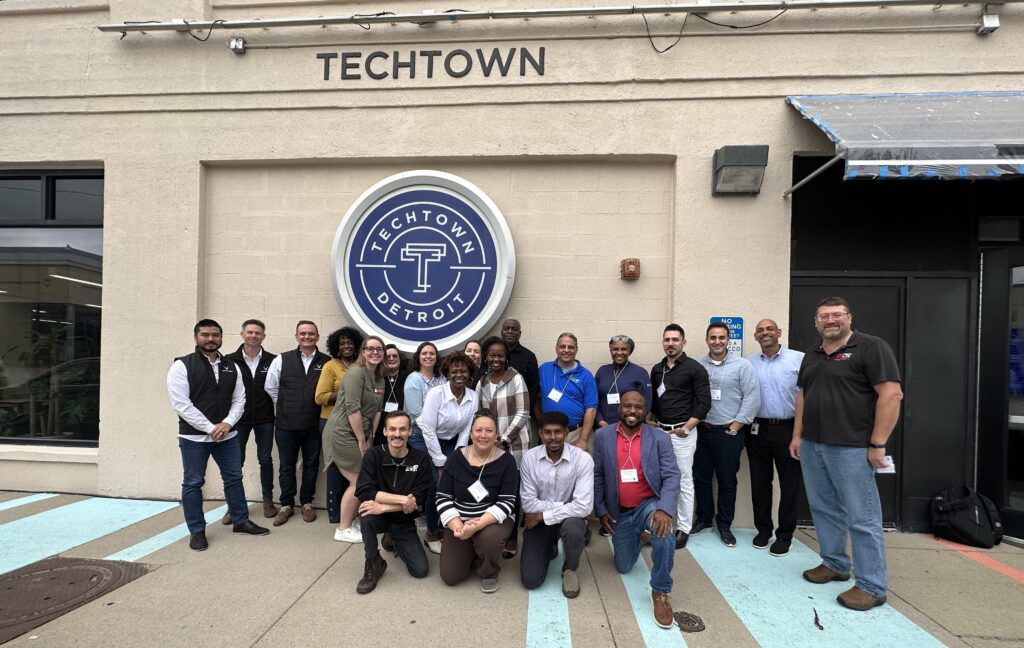
The Ascend Energy & Mobility Accelerator – a collaboration of VentureWell and TechTown Detroit funded by the U.S. Department of Energy Office of Technology Translations – offers support to entrepreneurs creating solutions focused on emissions reductions, smart mobility technologies, and infrastructure development. Ascend is entering its second year after providing resources and training to ten startups in 2023. SBN Detroit spoke to Tricia Compas-Markman, director of National Venture Programs for VentureWell about the program and its impact on businesses and the economy in Southeast Michigan. Q: What is the Ascend Energy and Mobility Accelerator and how did it come to be? A: Ascend is powered by VentureWell and TechTown Detroit and is funded through the U.S. Department of Energy (DOE)’s Office of Technology Translations. VentureWell, a nonprofit providing training, funding, and resources to science- and technology-focused innovators and startup teams across the country partnered with TechTown in 2017 to create an investor engagement program to educate innovators and entrepreneurs on how to raise funds to support their inventions. We began to see a gap. These individuals and startups needed more support when it came to customer discovery and commercial launch. We received a $500,000 award from the U.S. Department of Energy Office of Technology Transitions to create programming and support for energy startup teams and entrepreneurs and launched the Ascend Energy & Mobility Accelerator, which trained its inaugural cohort of ten Michigan startups in 2023. We were then one of four incubators to receive a grand prize in the Energy Program for Innovation Clusters (EPIC). This prize funding will also support VentureWell and TechTown Detroit in running additional Ascend programs in 2024-2025 and beyond. Q: Tell me about the program. A: It’s a six-week program that helps bridge that gap I mentioned between customer discovery and investment readiness. We focus on mostly hardware solutions around energy and mobility problems, so these can be innovations around EV batteries, charging stations, safety, performance, and more. Q: What are some examples of startups you worked with in the launch-year program? A: Surge Mobility is a great example. This is a software management program that streamlines the EV charging process for drivers. Another example is Freight Miner, a startup based in Ann Arbor that’s developing autonomous driving technologies for commercial fleet trucks. Energy-focused startups in the cohort included ThermoVerse, which is developing cost-effective heating and cooling energy retrofits for low-to-middle-income housing property managers, enabling energy-efficient building upgrades without the need to open up walls. Another is VMX Green, a woman-owned recycling company that is now developing a recycling process for automotive end-of-life lithium-ion batteries, allowing for safer and more sustainable disposal of hazardous waste materials. Q: How does the work you are doing involve businesses and the economy in Southeast Michigan? A: In a couple of ways. First, VentureWell acts as a connector, so we are working within the regional ecosystem to help these innovators and startups connect and network. This provides opportunities for all. The community is already robust, and we are there to elevate existing resources. Second, we bring in mentors who act as an extended part of the teaching team. Many of our mentors are active investors and successful entrepreneurs who also assist in getting the teams connected to local business opportunities and networks. Example mentors include Erika Block, Ellington Ellis, Anne Maghas, Domineca Neal, and DeWayne Williams. VentureWell and TechTown Detroit are also supported by an active regional advisory committee made up of mobility and energy experts in Detroit and the local region, including Tu Le (Mobility EIR, TechTown), Alisyn Malek (serial entrepreneur and mobility expert), Clay Phillips (Mobility Technology Lead, Michigan Small Business Development Center), and Sherelle Streeter (Senior Mobility Strategist, Office of Mobility Strategy – Detroit). Q: What is the end goal? A: The end goal for the teams following the intensive six-week program is to make progress (validate product-market fit, clearly tell their story, and understand the financing landscape) and leave the program with a community of people supporting them, including peers, program mentors, and connections to the local ecosystem so they can achieve their next milestones. Our intention is for them to come out with a viable financial and business model. During the final two days of the program, we host in-person networking events at TechTown to connect these startups to partners, service providers, and investors with the intention of creating more resources and opportunities. It can be overwhelming to navigate the ecosystem here so we provide support to our alumni teams and, oftentimes, those who don’t make the cohort and need more preparation to do so. Q: How do you think the startups coming out of the program will impact the region? A: First, these entrepreneurs and startups create job opportunities for others. We also had two teams last year that were not from Michigan, who are now establishing business operations in Michigan – Surge Mobility from Turkey and Voltaic Marine Inc. from Beaverton, Oregon. There is a lot of innovation coming out of Michigan, but often founders leave to follow the money. When we can keep talent here, and also bring talent in, I think that’s a big win. We want inventors to stay local and give back to their communities. Be sure to subscribe to our newsletter for regular updates on sustainable business practices in and around Detroit.
Urban Tech Xchange Facilitates Real-World Testing to Create Sustainable Urban Solutions
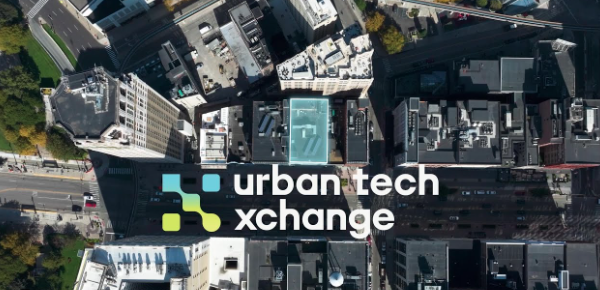
Nearly six months ago the Urban Tech Xchange (UTX) launched in Detroit – an innovative lab hosting a series of startups to advance smart city technologies. UTX is a collaboration between Bedrock, Bosch, Cisco, and KODE Labs and is operated by NextEnergy. The space provides a real-world test facility for the progression of sustainable urban solutions. Kevin Mull, senior director for the Office of Urban Strategy and Innovation at Bedrock, sat down with SBN Detroit to discuss the work being done there. Q: Impetus behind UTX? A: In 2021 Bedrock worked with Bosch, Ford, and the Michigan Economic Development Corp. (MEDC) to launch the Detroit Smart Parking Lab (DSPL) at our Assembly Parking Garage. This lab was specifically designed to accommodate open innovation, allowing startups to quickly and effectively deploy early-stage mobility technologies in a real-world testing environment. The concept has worked so well that we began to think about what’s next… being Detroit’s largest real estate developer, it made sense to try to apply those same methods to developing and deploying technologies for the built environment. The DSPL’s focus is mobility and transportation, which in many ways is dependent upon infrastructure, so the Urban Tech Xchange (UTX) was its natural progression. Q: In what ways does UTX help to foster a more resilient Southeast Michigan? A: I think it brings attention to the region’s entrepreneurial spirit and helps define Detroit as a place for innovation while adding another layer to its creator ecosystem. It also gives us a chance to further collaborate with stakeholders here in Southeast Michigan. Between the DSPL, TechTown, Michigan Central, Centrepolis Accelerator, and others like those, and our universities and colleges, and now UTX, we have an emerging set of platforms for continuing to attract and cultivate new ideas and advance open innovation throughout the state. Q: Why the combination of Bosch, Cisco, Bedrock and KODE Labs? A: Bosch and Bedrock are natural cofounders as they have complementary business concepts. Bosch is a lead innovator in energy and building management, while Bedrock is a city builder whose development projects throughout the central business district range from residential and commercial development to hospitality and retail. Cisco is a globally recognized brand and a huge player in smart infrastructure deployment, while KODE Labs is uniquely positioned as a Detroit-based startup focused on smart building technology that has recently experienced tremendous growth. The four companies together bring all the expertise for supporting a sustainable innovation platform, and importantly, maintain a strong Detroit presence. Q: How will Bedrock data be used to design sustainable solutions? A: This is the first-in-the-world kind of opportunity that’s driven by the uniquely dense portfolio we have in Detroit. We have this construct we are working on called a data lake, which is the aggregation of the data that comes from Bedrock’s 17 million square feet of real estate across Detroit. Its access to this unique operational data, combined with publicly accessible information like that from Census Data and the U.S. Energy Information Administration, provides lab participants with the unique opportunity to tie into a broad real estate ecosystem. We encourage and want anyone who engages with UTX to integrate their data as well, and under the right governance, we can offer this data lake to third-party developers for innovation. Q: In what ways are energy usage and decarbonization being looked at? A: Technologies like those being tested and deployed through the UTX platform allow us to track energy usage in real-time and better understand asset optimization. This provides us with the ability to cut back quickly and efficiently on carbon intensity. For example, heat pumps are a great technology but in certain situations, traditional heating systems might actually create less carbon. Real-world and real-time testing will help reveal this. The more data we get, the better decision-making we have and that can support AI applications as well. So first, it’s about understanding where a building is using energy, then understanding how the building responds to energy usage profiles. Q: Elaborate on how UTX is forming best practices for ensuring equity in urban tech solutions. A: When we set out to develop UTX we engaged several stakeholders such as community organizations, local government, public schools, and other platforms to all weigh in. Our work is fully transparent and there is a lot of communication in terms of where we are applying the technologies. For example, we are currently deploying tech in an area of Detroit to better understand air and noise pollution. We are working side-by-side with the community to make sure businesses and residents understand where we are doing this, how we are doing it, and in what ways the information will be used. Communication is paramount when trying to achieve equity in tech deployment. Q: In what ways does all of this work being done here impact businesses in Southeast Michigan? A: I look at it as a bidirectional flow. By establishing the UTX platform, we are helping to attract the best and brightest to deploy their innovations locally. Conversely, established local businesses have the opportunity to plug into a platform that provides a potential global spotlight. Q: What are some examples of new technology that’s being developed there? A: There are several examples of building automation systems, such as using smart blinds that automatically adjust to provide maximum natural sunlight based on occupancy and interior temperature. What I find very interesting are new systems for tracking and automating accessibility. One such deployment is smart communication between power wheelchairs and elevators. … The elevator is automatically called when the wheelchair arrives! Q: Do you think UTX is a differentiator for Detroit? A: Yes. Again, it puts Detroit on the map as a place that’s committed to, and capable of driving innovations and setting benchmarks and best practices for sustainable urban solutions. UTX is putting a stake in the ground for sustainable tech in an urban environment. Detroit is where the innovation is happening. Be sure to subscribe to our newsletter for regular updates
Unlimited Recycling – 25 Years and Still Evolving
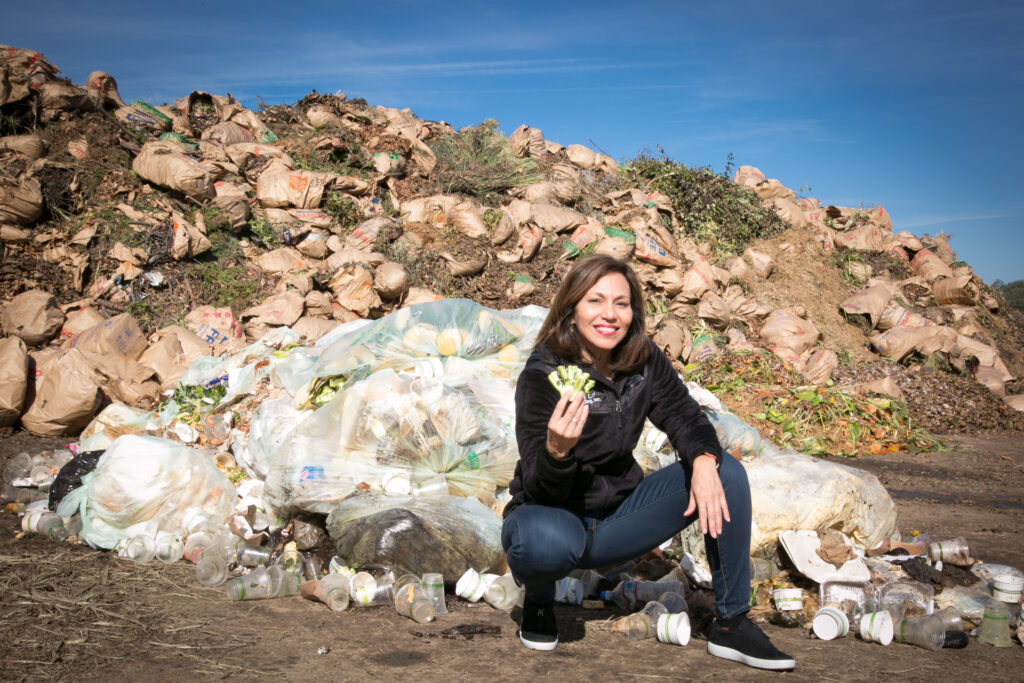
In 1999, Maria Marin tapped into her passion for “doing the right thing for Mother Earth” and started Unlimited Recycling Inc. Today, the company offers total recycling and waste management to companies and individuals nationally with the goal of going global. SBN Detroit sat down with Marin to hear about how her recycling services – and clients – have evolved over the years. Q: Tell me about Unlimited Recycling A: Unlimited Recycling is a comprehensive total waste management company offering one-stop-shop services for any type of waste stream. Our services include transportation of any waste or recycling material, equipment rental, including dumpsters of any size, compactors, balers, and any type of container to properly store and transport material. In addition, we offer reporting, training, and education. To date, we’ve handled millions of pounds of waste. Q: What prompted you to start the company in 1999? A: I worked for the Department of Natural Resources, and we received many calls on illegal dumping in waterways and even backyards. When I became pregnant with my first son – who is now the VP of the business – I was told not to eat the fish out of the Great Lakes due to mercury levels. I was so disturbed by that and felt I needed to do something about this problem. I also had the desire to be independent and have my own business. The opportunity presented itself when I lost a job and was looking for next steps. I decided it was time and that I could start my company and shape it any way I liked. The opportunities were limitless, so I named it Unlimited Recycling. We started with universal waste such as fluorescent lamps, batteries, electronic equipment, etc. Eventually, customers started asking about other waste streams, including industrial waste and gradually adding more services. Q: How did your business evolve? A: In 2008, I had the opportunity for an Army contract – they wanted solid waste management for recycling and trash. This would require trucks and dumpsters in an industry I did not know anything about. It took three months for me to learn the business, and the contract was awarded two months later. I purchased my first roll-off truck and 13 dumpsters. Our fleet and equipment have grown tremendously since then. Facilities and companies want one vendor to oversee all their recycling and waste management needs, so we have taken this on by managing these companies’ vendors, contracts, billing, dispatching, and purchasing. We went national about three years ago. Q: How have things changed over the years with the recent government mandates and focus on greenhouse gas emissions and sustainability overall? A: It has been very refreshing to see that the State of Michigan and the governor are on board. Last year, Michigan set new policies to increase the state’s 19% recycling rate to 29% by 2029 and organic waste to 45% material recovery by the year 2050. I believe these goals could be achieved much sooner. To do this, we need to spread awareness within our personal and professional communities. We are working with companies such as Walbridge, managing LEED disposal management for the Gordie Howe International Bridge U.S. Port of Entry, Selfridge Air National Guard Base waste and recycling for the last 22 years, and total waste management for Android Industries, Magna, and many other automotive suppliers. When I started the business, people thought I was crazy. Now I don’t have to sell the why. We have people calling us every day. It’s still a challenge, but every day awareness increases more for the need to recycle. Q: You mentioned you also train companies in recycling. What does that look like? A: Yes. Many people still don’t know how to properly recycle and also find it daunting. I go into businesses and implement their recycling program according to their needs. Often, we start with single-stream recycling for offices and train them on acceptable items and materials, containers needed, etc. Many people do not realize that if you put one waste material that doesn’t belong in a recycling bin, it will contaminate the load. Also, there is a misconception that recycling is expensive. We’ll do a cost analysis for companies and show them that being sustainable is not only the right thing to do, it can also be economical. We’ve saved companies thousands of dollars from diverting cardboard alone. Q: Have the needs of your clients changed a lot through the years? A: Yes. Many started with one service and now we are handling all of it. I’ve seen many companies grow in their efforts over the years. They are becoming more environmentally aware, and their corporate offices are setting higher standards for sustainability, so we get requests all the time from current customers asking if we can recycle new additional waste streams for them or find a solution for a waste stream that isn’t commonly known to be recyclable. I think our services and creative solutions help us retain our customers and find new ones through recommendations regularly. I think that credit goes to our amazing team that responds quickly to customer requests and needs. Q: You offer dumpster rental, universal waste recycling, industrial waste recycling, food waste composting, and LEED waste management. What services do companies and institutions use the most? A: All of the above every day! We are getting more and more requests lately for LEED. (Leadership in Energy and Environmental Design). Q: What does your future look like? A: Our goal is to increase our total waste management services to help companies reach their sustainability and zero-waste landfill goals. We started here in Detroit and are now nationwide; however, it has always been in the plan to go global. I want to go back to my roots, to South and Central America, to teach Latin communities how to recycle, providing them with education and resources. I was recently invited to travel to Africa to assist the country with its plan to implement
The Economics Behind Sustainability for Commercial Real Estate
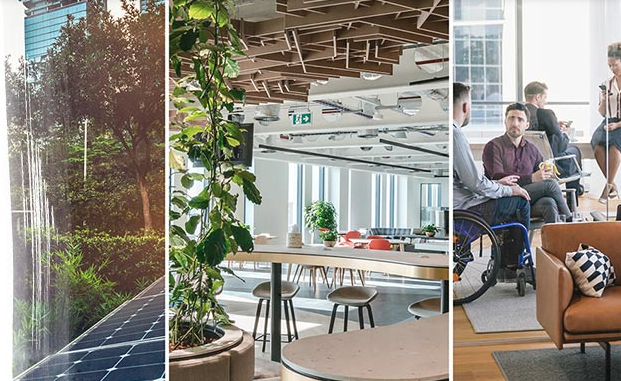
JLL, incorporated as Jones Lang LaSalle, is a global real estate services company with over 100,000 employees and offices in 80 countries. The company launched its sustainability services business in 2021 and it now has over 1,000 sustainability professionals working in this capacity globally. Greg Bolino, JLL’s head of global sustainability strategy & assets, explained the company’s approach to SBN Detroit. Q: What can you tell us about JLL’s sustainability services? A: Our mission is to help clients achieve their sustainability goals, and we know this will help us achieve our goals and result in JLL being more sustainable as a business. Our sustainability services are built on three pillars: Consulting, which involves advising clients on investment strategies and asset planning; Clean Energy – assisting those who invest in infrastructure to ensure their initiatives involve clean energy; and Sustainable Operations, which focuses on helping clients achieve their sustainability goals within their facilities. Q: When was this established and what is the impetus behind it? A: The company has been doing things related to sustainability for years. In 2021, I was brought in to transform the practice to formalize and scale these services. Q: JLL has 30,000 people trained in sustainable real estate – how do you define sustainable real estate? A: We focus on four things when it comes to sustainable real estate: carbon lifecycle; resource decisions such as waste and water consumption; social value; and risk, which includes physical climate impact, business risks, and economic risks. We trained 30,000 employees to have a working knowledge within these areas, 2,500 of our employees are network champions and advocates, and 1,000 practitioners work in the Sustainability Services group full-time. Q: How do you approach increasing the value of a client’s portfolio with sustainability at the forefront? A: We work with real estate investors and corporations. When it comes to investors, if we look at office leases in the U.S., 34% of leases will renew in the next two years. More and more companies are looking for space to help them reach their decarbonization goals. This puts pressure on owners of facilities to invest in decarbonization. So, we are helping investors think through the rationale for making these investments. Many big corporations such as banks and tech companies that lease space are just starting to work out their carbon pathway. We help them bridge that chasm by rethinking their locations, relationships with landlords, and capital investment plans. So, both investors and corporations have consequential decisions at hand when it comes to decarbonization and sustainability, and we help them work through these issues. Q: The JLL website states that 40% of carbon emissions globally come from buildings, so decarbonizing real estate is fundamental to securing a more sustainable future. What can you tell us about this? A: The 40% number is the most quoted figure in real estate. I think that understates the size of the challenge. Transportation and buildings combine to make up the majority of a large city’s carbon footprint. This is why so many cities are setting standards to compel buildings to do more. Even companies whose real estate is a small part of their carbon footprint want to decarbonize their buildings now because it’s the first thing people see, and they want to be clear about their commitment. The greatest pressure is coming from employees on this front. Q: What are some examples of work you do in Southeast Michigan? A: JLL has offices all over Michigan including in Ann Arbor, Royal Oak, and Detroit, and we have our hands in so many things. I’ve advised Michigan utilities, the city of Ann Arbor, and local developments working on sustainable communities. I’m a founding board member of the Equitable Ann Arbor Real Estate Trust focused on more development of affordable housing. We work locally and globally. Q: JLL has a net-zero target validated by the Science Based Target Initiatives collaboration between the CDP (Carbon Disclosure Project), the United Nations Global Compact, World Resources Institute, and the World Wide Fund for Nature. What does this mean? What actions are you taking internally to address sustainability? A: JLL was among the first in our industry to commit to emissions-reduction targets based on criteria set by the Science Based Targets Initiative (SBTi). Our goal is to reach net-zero greenhouse gas (GHG) emissions across scopes 1, 2, and 3 by 2040. We have a near-term target to reduce emissions by 51% by 2030. This is a massive goal. 96% of our carbon footprint consists of our client’s facilities. So, our internal commitments and goals flow through to our clients. Q: What are the market forces you are up against? A: The U.S. office sector is going through a difficult time. High-interest rates make improvements challenging. In the US, we are the slowest to return to work anywhere around the world. Weak occupancy in buildings has contributed to slowing retrofit investments. Buildings are the least digitized asset class, making analytics and modeling more challenging. Q: What is the end game? A: The end game is simple – sustainability must be baked into how Real Estate is bought, sold, and managed. We are moving to a place where we must do business more sustainably. The whole value chain has to change. It’s inescapable that the market and employees are watching these commitments. There is no way companies can ignore or withdraw from these goals. The economics behind moving to sustainability are getting stronger and stronger. Be sure to subscribe to our newsletter for regular updates on sustainable business practices in and around Detroit.
Global Green Energy and Metals Company Chooses Detroit for its First U.S. Advanced Manufacturing Center
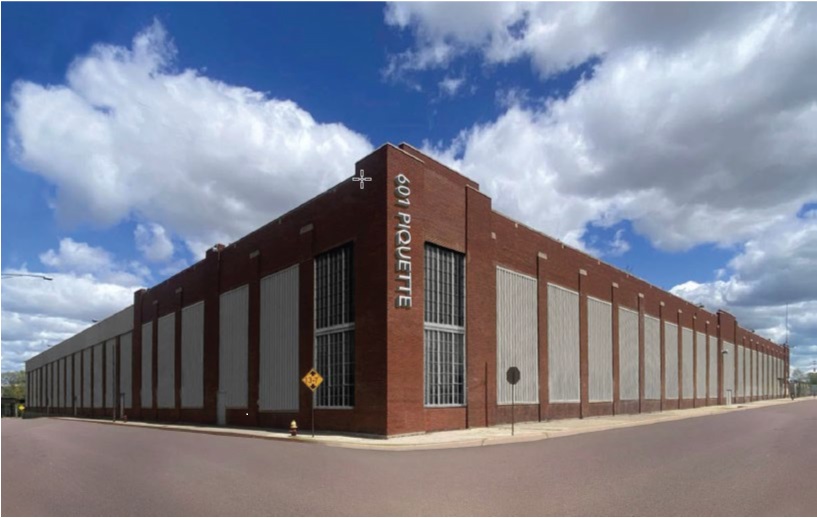
The former Fisher Body Plant on Piquette Avenue in Detroit has been chosen by Fortescue, a global green energy and metals company, as the location for its first U.S. Advanced Manufacturing Center. The facility will bring roughly 560 manufacturing and engineering jobs to the area focused on the production of automotive and heavy industry batteries, hydrogen generators, fast chargers, and electrolyzers. The project received incentives from The Michigan Strategic Fund, including a $9 million Michigan Business Development Program performance-based grant; a 15-year, 100% State Essential Services Assessment exemption valued at $1,300,950; and state tax capture valued at $2,374,413, for reimbursement of brownfield activities at the site. The project also is requesting $5,247,422 in tax-increment financing from the Michigan Department of Environment, Great Lakes, and Energy to assist with environmental-eligible activities. SBN Detroit interviewed Josh Hundt, MEDC’s Executive Vice President and Chief Project Marketing Advisor, about the role Fortescue will play in Michigan. Q: Fortescue chose Detroit Michigan for its first U.S. Advanced Manufacturing Center. What do you think this says about Southeast Michigan in terms of sustainability and manufacturing? A: It says that Michigan and Detroit are at the global epicenter of the mobility industry. Having put the world on wheels 120 years ago, Detroit is the birthplace of the automotive industry and it is also the industry’s future. This also clearly points to the fact that companies have a desire and need to be in Detroit for these types of opportunities. Q: Tell me about Fortescue. A: Fortescue is a global green energy company that plans to breed manufacturing practices and clean energy growth through its center here. Its goal is to be the number one green tech and metals company in the world. Q: What role did MEDC play in bringing Fortescue to Detroit? A: MEDC helps to grow companies already in the state while attracting new businesses to Michigan. Fortescue looked at 99 sites across twelve states, considering many variables such as labor cost, availability, cost of business, speed to come to market, and more. We’ve worked with them since they announced their decision to build in the U.S. to secure the right space for them in Michigan. Q: Fortescue’s CEO, Mark Hutchinson, said, “Fortescue’s Advanced Manufacturing Center will breathe fresh life into the birthplace of the automotive industry.” What are your thoughts on this? A: Michigan, Detroit, and the old Fisher Body Plant are all steeped in automotive heritage and legacy, and we can utilize that legacy of engineering, and research and development, and manufacturing to build the future of clean energy, advanced manufacturing, and mobility. This is an opportunity to move the industry, state, and community forward. Q: Why Detroit? A: Fortescue can leverage the 120 years of experience we have in Detroit to build a bridge to the future. Nearly three-quarters of U.S. automotive research and development takes place in Michigan. We lead the production of EV battery production. We have an existing supply chain and strong industry here. Fortescue also strongly considered ‘place.’ This community is in the midst of a transformation in terms of how investment is happening, and it’s a community of people who are skilled and educated to fill the roles the company will need. Q: How do you think Fortescue will impact other businesses in Southeast Michigan? A: Every time we see a company make an investment like this, it has a strong ripple effect on the industry, city, and region. This demonstrates that companies from around the world see Detroit as the future of mobility and advanced manufacturing. Fortescue will create 560 new jobs and is making a $210 million investment. This will help increase property values, and it’s an opportunity to develop the supply chain much further. This is great news for the industry and the community. Q: How do you think it will impact the economy? A: First it will create 560 jobs. Second, it furthers Michigan’s strength in the mobility sector while highlighting that we are the center for advanced manufacturing and clean energy. Third, this investment will also bring new tax revenue and new opportunities for suppliers to have growth occur here in Detroit. And finally, their presence will impact restaurants and venues in and around the community for additional growth. Q: What role do you think Fortescue will play when it comes to sustainability in Southeast Michigan? A: I think the biggest thing is the role they play in showing leadership – demonstrating that a company can have a great economic impact with job creation and investment and do it in a way that also puts sustainability and the environment at the forefront. And, their choice to renovate and utilize the old Fisher Body Plant speaks volumes because it shows that a facility can be reimagined and transformed for the future. This is an investment in a century-old building being leveraged to take us forward. Q: What does the future of Southeast Michigan look like with Fortescue as a part of it? A: Fortescue will be part of a strong mobility landscape and a part of the overall story of how Southeast Michigan is positioned to remain the global leader of the mobility industry. We’ve seen the success of projects around innovation and investments – like Nel and Plastic Omnium – that have positively impacted Southeast Michigan. This is a project that will put people in sustainable jobs, revitalize the area, boost the economy, and facilitate green energy for the future. It is a win for everyone. Be sure to subscribe to our newsletter for regular updates on sustainable business practices in and around Detroit.
The Intersection of Development, Movement of Goods, and Sustainability
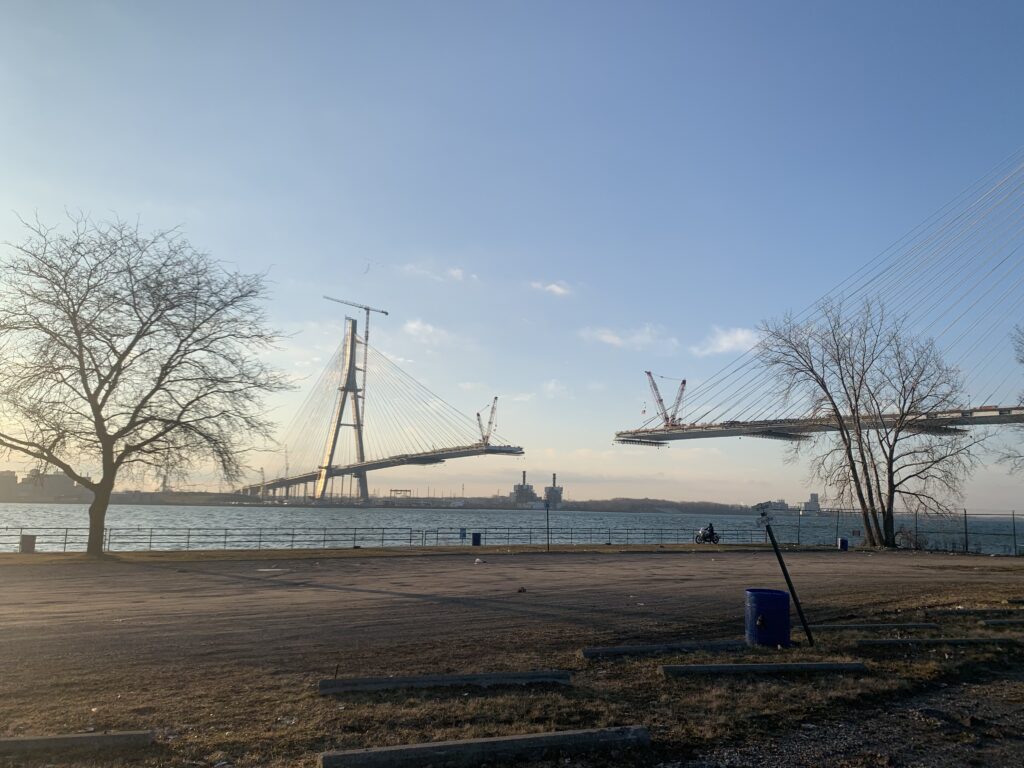
Nine months ago the Port of Detroit launched a decarbonization project aiming to reduce its environmental impact and improve air quality. The project – in partnership with Tunley Environmental and Southwest Detroit Environmental Vision (SDEV) – involves a range of initiatives, beginning with a full assessment of the port’s current fossil fuel emissions. Concurrently, the construction of the Gordie Howe International Bridge is well underway, due to be completed in September 2025, which has many implications involving sustainability in Southwest Detroit. SBN Detroit interviewed, Mark Schrupp, executive director of the Detroit/Wayne County Port Authority, to get an update on the decarbonization efforts and obtain some insights on how those efforts overlap with the bridge development and the future of air quality and sustainability in that area. Q: We last spoke in August, at which time you were just launching the decarbonization project. Where does it stand now? A: The baseline assessment of the carbon footprint of the Port of Detroit is near completion. This is a significant milestone. We have measured all emissions of bringing materials into the port, including equipment used to move materials, emissions from tugboats, and ships, and broke it down by terminal and operator. Next, we’ll lay out plans for eliminating that footprint over the next twenty years. Q: What will initial strategies involve? A: Most of our focus will be on diesel. Ships and heavy equipment operate on diesel and the quickest fastest way to reduce emissions is to convert to biodiesel. We are pushing hard for that. The long-term solution may be hydrogen, but this involves major upgrades and renovations to the vehicles and ships, and the infrastructure. In the meantime, we can reduce carbon emissions by 14% to 15% by switching to a biodiesel blend right away. This will have immediate impacts on global warming and air quality. Q: Is the use of electricity an option? A: It’s not a good option. The heavy-duty equipment used in the port region would need massive batteries to power them, and there are just not a lot on the market today. All U.S. ships that operate in the Great Lakes are being encouraged to convert to biodiesel. Canadian ships are already switching to B20 and higher blends. This will help when ships are docked and running on generators. Q: How does this intersect with the development of the Gordie Howe International Bridge and the use of diesel and biodiesel in heavy-duty trucks? A: The significant increase in truck traffic in Southwest Detroit makes it more likely to get funding to convert those trucks to hydrogen or biodiesel. The concentration of diesel fuel in this region makes a strong case for that. The switch to biodiesel would help immensely, as the heavy equipment used in the ports can run on that too. It would have a massive impact on the air quality. The challenge is getting enough biodiesel supply. It is a supply and demand issue. Also, without government incentives, biodiesel costs more than regular diesel. Other states have implemented tax credits or financial incentives to the producers, and a mandate for the users, creating a carrot and a stick scenario. What is needed is legislation to create funding to increase the supply and incentives to bring down the cost. Canada has created a penalty in the shipping industry for those who don’t use biodiesel. In the Port of Detroit, there is one fuel company – Waterfront Petroleum – that supplies the fuel for most ships. That company has received some funding and is ramping up its ability to provide biodiesel for the ships in reaction to this Canadian penalty. We are working to help them secure funding, etc. At the same time, we are helping to educate ship owners on using biodiesel. There are some extra filter changes and small operational things that need to be done to get the most from the fuel. Industry players promoting this to help ship and truck owners understand how to use it. Q: Overall, do you think the development of the bridge is a negative or positive for the port? A: The bridge has driven up prices on land in the area. One of the projects we are working on is to extend a rail line to the waterfront for a private partner, and the prices for land to run that rail line have gone up because of speculation around the bridge. But it will have a positive impact on our region in terms of manufacturing. The bridge will help keep Detroit as the epicenter of most of the automobile production. If auto manufacturing remains strong, those sectors will need more raw materials that flow through the port. This will be bolstered by the bridge because it will make the movement of goods more efficient. This will ultimately have a ripple effect on our economy – for the positive. We are also looking at ways we can leverage the bridge to help make the port of Detroit more of an intermodal hub for finished goods and other kinds of goods. For example, instead of big ships unloading on the coast in Quebec or New York and then putting materials on trains to reach our region maybe having the bridge makes Detroit/Windsor a better destination for those shippers to reach midwestern customers. We are still researching this. The challenge is that the really big ships can’t get into the Great Lakes. But we are looking at ways to be more efficient with smaller ships and other solutions. The idea is ultimately to take some of the railroad traffic off the East Coast rail lines and get the goods closer to the customer. Q: What are the next steps in terms of your decarbonization project? A: We are planning a community event to showcase the process and planning and next steps. We are really pleased with the work and collaboration efforts involved in this project and are looking forward to sharing it with the community. We are also in a
Moving Toward a More Just and Sustainable Future in Southeast Michigan
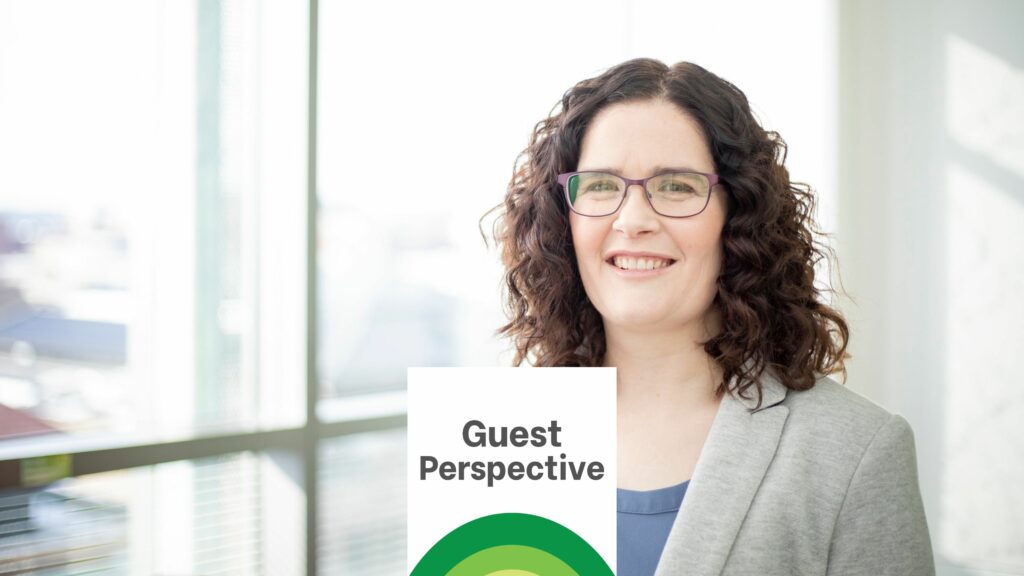
Sara Soderstrom is an associate professor in Organizational Studies and Program in the Environment and the Erb Undergraduate Fellows faculty director at the University of Michigan. Sustainability has evolved significantly over the years. At the University of Michigan’s Erb Institute for Sustainability in Business, this evolution includes working toward market transformation: business transforming the market to make it more sustainable. We can’t be thinking only: ‘How do we do less bad? How do we pollute less? How do we use fewer resources?’ We need to actually think about ‘How do we do more good?’ That fundamentally pivots the way that you think about business—it’s much more of a proactive than reactive conversation. It also centers justice in a way that early business sustainability didn’t. This shift changes the local vs. global dynamic to consider the local as part of the global system, and it sharpens the focus on small and midsize businesses. It also considers supply chains and key stakeholders more broadly. A study that I conducted with Kathryn Heinze, associate professor in the School of Kinesiology at the University of Michigan, shows some of the ways these shifts are happening. The study focused on the nonprofit FoodLab, which was operating in Detroit at the time. FoodLab aimed to promote healthy, environmentally sustainable, and accessible food systems and to grow a good food economy by working with its members: local food entrepreneurs. One thing that we realized as we were working with local entrepreneurs was a focus on being embedded in place—what is Detroit? What is the commitment to the city? What is the future for the city we envision? And how do we place ourselves in that future as entrepreneurs? With this network of businesses, there was a strong motivation not just for the financial viability of the business, but for doing good through business. But at the same time, these entrepreneurs have resource constraints, so there are tradeoffs. How do you balance things like a living wage with ensuring composting or locally sourced materials? FoodLab helped ease some of these constraints by serving as a connector that lowered the barriers to entry around sustainability. This way, each entrepreneur didn’t need to have all the answers or all the resources—they could get the information they needed about sourcing, financing, or best practices through the network. FoodLab functioned as part incubator, part social movement organization, connecting folks with these shared interests to collectively learn, but also as the space that could aggregate these resources and make them accessible to people, so that they could more effectively move forward towards sustainability and justice goals. FoodLab asserted that they couldn’t have a just and sustainable food economy if there wasn’t engagement, ownership, and voice from diverse entrepreneurs that reflect the City of Detroit. So they had a lot of intentionality around diversity and engagement, both in who was participating as entrepreneurs in the network, but also in what they were prioritizing as their goals as an organization. It was centering equity and justice in almost every conversation and decision they were having. The ways that FoodLab built its organizational practices and structured conversations made sure that everyone involved felt like they were heard, even in contentious conversations, which built trust and helped them move collectively towards this more just and sustainable imagined future. The Erb Institute – a partnership of the Ross School of Business and the School for Environment and Sustainability at the University of Michigan -. works to create a sustainable world through the power of business. Somewhat like FoodLab, we also serve as an enabling network. The students are the key actors, We are the convener, and then the network continues with alumni who are now 10 to 20 years out but still lean into us and each other for support as they work toward solutions to sustainability and justice challenges. Two of our key programs are: Impact Projects, through which students design projects, often working directly with businesses or partnering with businesses and community partners on organization-led projects. The projects give businesses access to students who have time, expertise, and passion around sustainability and justice efforts, who can help them focus on an issue—such as supply chain, procurement, or skills redevelopment. Erb on the Road, which brings both graduate and undergraduate students to businesses, nonprofits, and other organizations across Michigan. The program allows students to engage with a variety of different types of businesses and nonprofits that are focused on local sustainability challenges and figure out solutions for them. For undergrads specifically, what has been powerful is hearing them reflect on learning what is happening locally—which makes what we talked about in the textbook real—but their experiences are helping them recognize that business and sustainability is an available career path. People are committed to sustainability in myriad ways, and you don’t need to wait until you are chief sustainability officer to do sustainability. The Erb Institute is focused on preparing future leaders – and also service to the state of Michigan. We want students to recognize that being part of the University of Michigan isn’t just the Ann Arbor campus – it’s also the state and world. So we work to help focus that commitment to: What does it really mean to be the leaders and the best? Supporting and engaging locally in Detroit and across Michigan is part of that. Be sure to subscribe to our newsletter for regular updates on sustainable business practices in and around Detroit.
Martinrea: Balancing Growth with Energy and Waste Reduction Goals
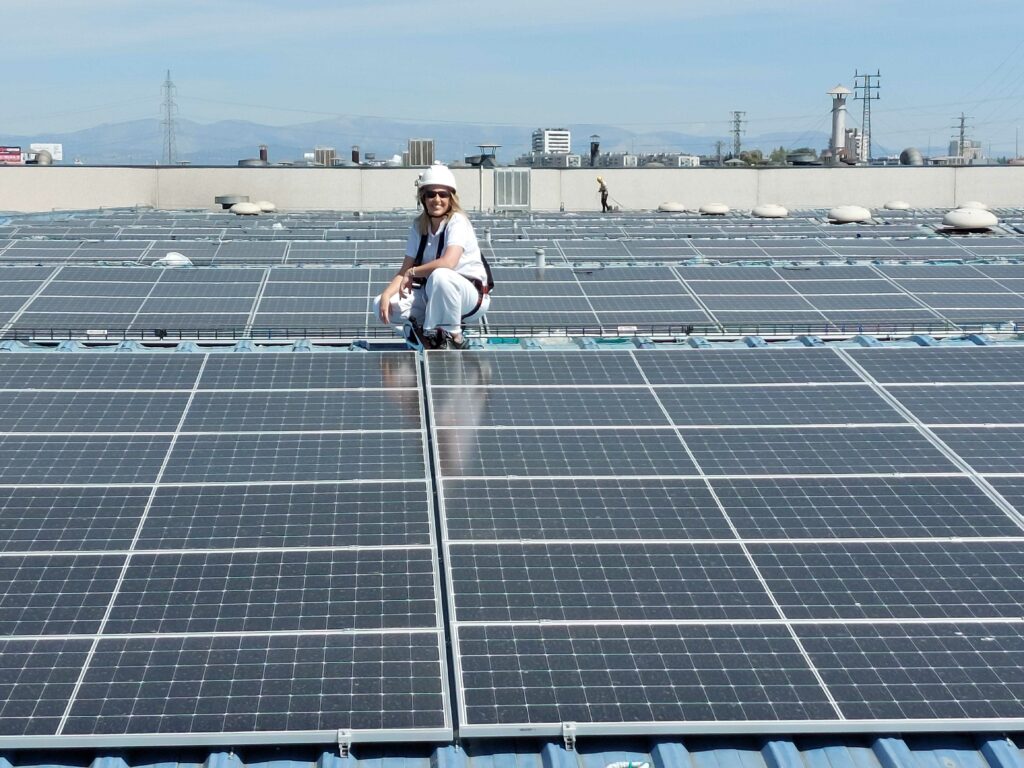
With over 19,000 employees working in 56 manufacturing, engineering, and technical centers in over 10 countries, Martinrea International is a global auto parts manufacturer focused on the design and development of lightweight structures and propulsion systems. Its sustainability goal is to operate in a socially responsible and ethical manner centered around respect for the environment, laws, universal human rights, and communities around the world. SBN Detroit spoke with Rachel Handbury, director of sustainability, to find out more about the company’s approach and execution. Q: How do you approach sustainability at Martinrea? A: Martinrea views sustainability as a holistic approach that encompasses both people and the planet. Our vision is to make lives better by being the best supplier we can be in the products we make and the services we provide. One of our ten guiding principles is to ultimately “leave It better.” Q: How is sustainability organized internally? A: There are a lot of different layers within Martinrea to achieve sustainability. It is embedded throughout the company from leadership to the manufacturing plants. We have a Sustainability Steering Committee, and the group holds quarterly meetings. This is led by our CEO, and his presence in the meetings drives the importance. We have a strong team working constantly on sustainability that meets weekly. This involves a sustainability lead from each of our four business units (Aluminum, Metallics, Flexible Manufacturing Group (FMG) and Fluids). We review each business unit’s sustainability targets, initiatives, and implementation. As you can imagine, each group drives their sustainability priorities slightly differently due to their different manufacturing processes. Q: In around 2019/2020, Martinrea hired a third-party consultant to assist with the sustainability strategy. How did that work? A: Martinrea utilized this consultant team to perform an internal materiality assessment, identify our stakeholders, and propose a sustainability strategy, which I was hired to manage. We then developed the business unit sustainability lead team and the Sustainability Steering Committee – the management structure needed to implement the sustainability strategy. Q: How do you get employees involved in sustainability? A: We do this in multiple ways. Education is key. The more our employees know about sustainability and how Martinrea supports sustainability, the more they want to incorporate it at work and in their homes. The fact that our leadership is on board is very important. It’s embedded from the top down and vice versa. Sustainability is also part of our internal business plan. We have implemented sustainability scorecards for the manufacturing plants and within each business unit, so everyone has clear sustainability targets they are looking to achieve. We also give out an annual ‘Leave it Better’ award to a plant that is excelling in all aspects of sustainability. The purpose is both to highlight the work being done and to foster involvement. The added benefit is that the winning plant inspires others to do similar work in their plant. Q: What are your short-term goals for 2024? A: We have a year-over-year goal of a 3% reduction in energy intensity (energy consumption relative to sales) in all operations. We also have a year-over-year absolute carbon reduction goal of 3%. This year we added internal water reduction goals, and we are working to reduce water consumption focusing on the plants located in high-water risk areas and plants that have the highest water usage. Q: What are your longer-term goals? A: 35% reduction in absolute carbon by 2035 without carbon credits, and we strive for every manufacturing plant to be zero landfill. Q: What are your biggest challenges? A: We are a growing company, so as our production increases, we have to balance that with continuing to achieve our reduction goals. Q: What are the biggest opportunities? A: Sustainability is very important to our customers and communities. We are an authentic company achieving our sustainability goals through energy efficiency and giving back to the communities in which we work and live. Our approach to sustainability provides a competitive advantage since our customers want to work with sustainable suppliers. Q: How are your suppliers vetted when it comes to sustainability? A: Suppliers are a big focus for us right now. Just as our customers view us as partners in sustainability, we also view our suppliers as partners. We have sustainability embedded in our supplier assessments and our supplier code of conduct. We are also providing more education to our suppliers so that they understand why it’s important to us and also to them. Some of our suppliers are in the early stages of sustainability and we can help to pull them along on this sustainability journey. Q: In 2022, Martinrea set a goal to reduce carbon emissions by 35% by 2035. How will you get there? A: It’s a multifaceted approach. But boiled down, we focus on reductions first. We need energy to produce parts, but we are looking at how we can use energy in the most efficient ways. The next stage is to look at renewable energy. In one of our plants in Spain, we just installed solar panels that provide 10% of the plant’s energy. Q: You have reduced carbon intensity by 19% since 2019 – how? A: This same strategy. We start with low-hanging fruit. There were significant reductions made by switching lighting to LED, simple changes in welding techniques, and more. It’s really about having eyes on the manufacturing process through the lens of sustainability and making changes. Q: What does the future look like? A: Following the strategy we’ve developed to push sustainability further each year, we will be utilizing innovation to accomplish energy and waste reductions, increasing efficiency, and then incorporating renewable energy, where possible. At Martinrea, it’s not about making broad claims, it’s about being authentic and digging deeper to see where we can make a difference, both for people and the planet. Be sure to subscribe to our newsletter for regular updates on sustainable business practices in and around Detroit.


